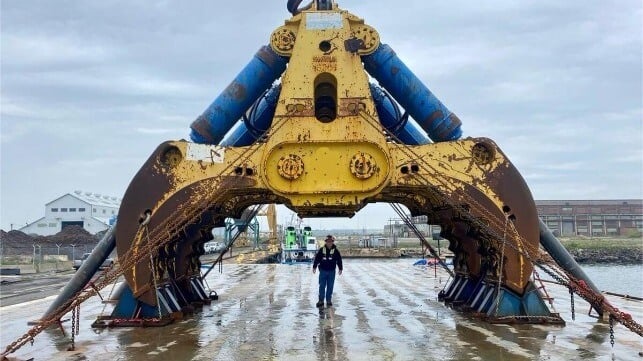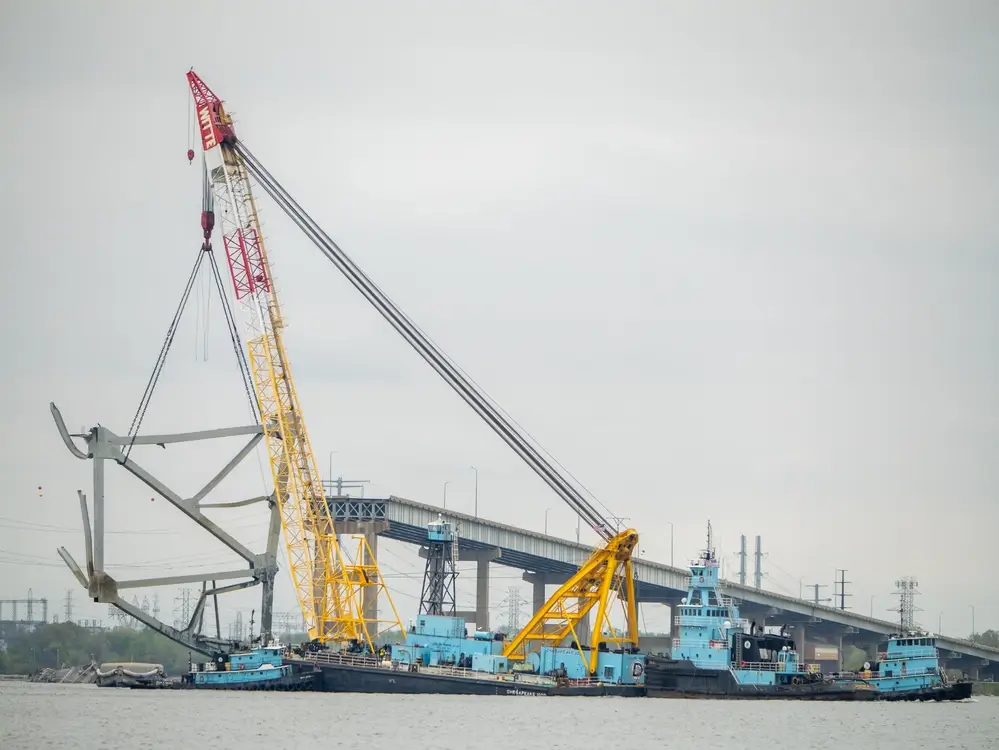1,000-Tonne Claw Arrives to Clear Baltimore Ship Channel

Efforts to clear the wreckage of the Key Bridge out of Baltimore's ship channel took a big step forward Monday with the arrival of a 1,000-tonne hydraulic grab. The massive claw will be used to extract the tangled mess of debris that lies embedded in the mud on the channel bottom, restoring the waterway to its normal navigable depth.
So far, the salvage crews have been working to cut and lift larger pieces of the bridge structure that remain above the surface, while pulling up smaller debris with a midsize grab. About 1,300 tonnes of steel have been removed so far, according to the Army Corps of Engineers. The newly-arrived grab could accelerate the effort by taking full advantage of the lifting capacity of the largest crane on the East Coast, the Chesapeake 1,000.

Courtesy USACE
Time is of the essence for local businesses. Global shipping quickly adapted to the shutdown, and the near-closure of Port of Baltimore has had little measurable impact on the broader national economy, according to the Federal Reserve. But for Baltimore-area companies that depend on the operation of the port, every day that goes by without a shipping channel is a day of lost revenue and lost wages. Certain Midwestern equipment manufacturers that use Baltimore for ro/ro shipping have also been affected. The state of Maryland has enacted grant and wage-supplement programs to help local businesses stay open, but the support cannot fully offset the impact for all companies.
“Businesses we talked to said they can manage a short-term disruption but if the effort to reopen the channel takes longer, they then expressed greater concerns about lead times and increased costs,” the Richmond branch of the Federal Reserve said last week in a regular report.
The Army Corps of Engineers, its Navy partners and private contractors are working at maximum safe speed to reopen the channel. In a statement, the Corps of Engineers said that it is moving ahead with "steady, precise action," minimizing the potential for errors and avoiding "unrealistic benchmarks."
The first step is to open a narrow, limited access channel of 35 feet in depth by the end of the month, followed by the full 50-foot-deep channel by the end of May. The limited channel will be big enough for ro/ros to resume service to Baltimore, which is the biggest ro/ro port in the country.
Insurers will also be happy to see access restored, since every day of shutdown is another day of business interruption claims. The bridge strike is on track to become the costliest maritime insurance loss in history, with claims potentially exceeding $2 billlion. When coupled with other mega-losses like the Ever Given, the Tianjin blast and the Costa Concordia, the Dali is prompting some in insurance to rethink their planning for low-probability, high-cost events.
“What’s really important is that these kinds of ‘black swan events’, as we like to think of them, are not actually as rare as the industry would like,” Nick Evans of insurtech firm Insurwave told Insurance Insider.
